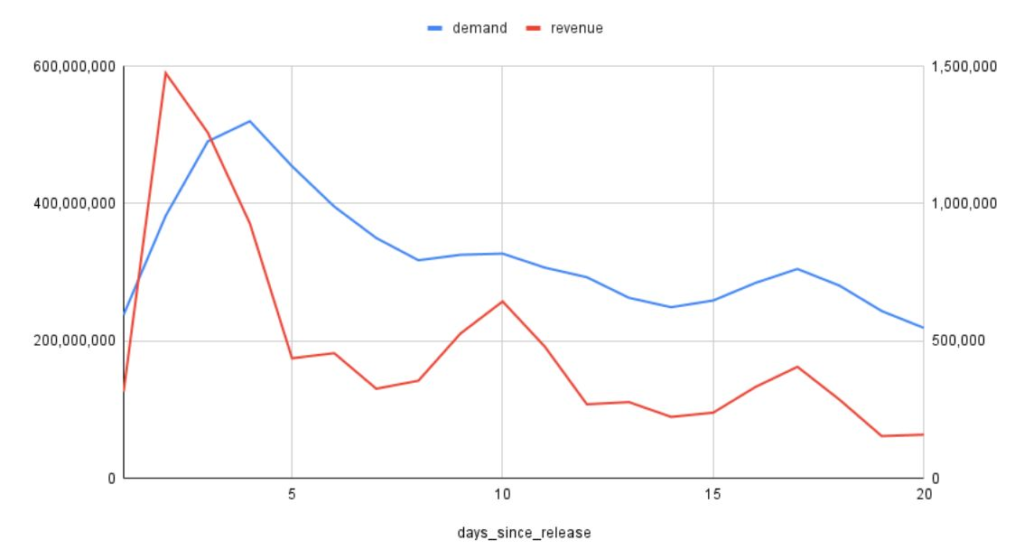The correlation between movie piracy and box office revenues revealed by the research conducted by piracy tracking firm MUSO highlights the complex relationship between illegal downloading and legitimate movie consumption.
At first glance, the connection between increased piracy and decreased box office revenues may seem counterintuitive. However, upon closer examination, it becomes apparent that several factors contribute to this correlation.

Firstly, the availability of pirated copies of movies can directly impact consumer behavior. When individuals have easy access to unauthorized copies of films, they may opt to download or stream them for free instead of paying for tickets to see them in theaters. This choice can result in a decline in box office attendance during periods of heightened piracy activity.
Conversely, when piracy levels decrease or slow down, it may indicate that fewer individuals are accessing illegal copies of movies. As a result, more people may choose to attend movie theaters to experience films on the big screen, leading to an increase in box office revenues.
Additionally, the findings underscore the importance of recognizing that pirates are individuals with preferences and behaviors shaped by various factors. Economic considerations, convenience, availability, and personal preferences all play a role in determining whether someone chooses to pirate a movie or engage in legal movie consumption.
It’s essential to remember that correlation does not imply causation. While the research identifies a strong correlation between movie piracy and box office revenues, it does not necessarily prove that piracy directly causes changes in theater visits or vice versa. Instead, it suggests that there is a relationship between the two variables that warrants further investigation.
Ultimately, understanding the dynamics of movie piracy and its impact on box office revenues can inform strategies for combating piracy and promoting legal movie consumption. By addressing the underlying factors driving piracy and providing consumers with accessible and affordable alternatives, the entertainment industry can work towards reducing piracy levels while simultaneously supporting the growth of legitimate movie distribution channels.
The findings presented by piracy research firm MUSO regarding the correlation between movie piracy volume and box office revenues are indeed noteworthy and shed light on the complex dynamics of film consumption in the digital age.
By examining piracy data alongside box office attendance for a diverse sample of film releases, MUSO was able to identify a strong correlation between the two variables. This correlation suggests that the level of interest in a film, as reflected by its popularity on pirate sites, mirrors the demand for the same film at the box office, particularly during its initial release period.
The research highlights the interconnected nature of legal and illegal channels for accessing films, with both authorized and unauthorized consumption patterns exhibiting similar trends over time. Specifically, the study found that demand for films tends to peak upon their release and gradually declines thereafter, with occasional fluctuations, such as weekend spikes, influencing overall consumption patterns.
With a Spearman’s Rank Correlation Coefficient of 0.85 indicating a robust connection between pirate and box office demand, MUSO suggests that unauthorized consumption data can serve as a reliable proxy for box office data and vice versa. This insight underscores the potential for piracy data to complement traditional box office metrics in understanding audience behavior and market trends within the film industry.
Overall, MUSO’s research provides valuable insights into the evolving landscape of film consumption and emphasizes the importance of considering both legal and illegal channels when analyzing audience preferences and movie-going behavior. By leveraging such insights, stakeholders in the entertainment industry can develop more informed strategies for content distribution, marketing, and anti-piracy efforts to better serve audience needs and protect intellectual property rights.

Your analysis raises valid points about the limitations and nuances of the correlation observed between piracy volume and box office revenues. While the research indicates a strong association between the two, it’s essential to delve deeper into the underlying factors and potential implications.
Indeed, correlation does not imply causation, and it’s crucial to consider other variables that may influence both legal and illegal consumption patterns. For example, the heightened interest in new releases, regardless of the distribution channel, may contribute to the observed correlation. Additionally, the rank comparison method used in the analysis may not capture the full extent of the relationship between piracy volume and box office revenues, as the magnitude of changes may differ significantly.
Moreover, aggregating data for all films combined may obscure variations in consumption patterns across different titles. A more nuanced analysis that examines individual films and considers specific conditions or factors could provide valuable insights into the complex dynamics between piracy and legal consumption.
Nevertheless, the overall conclusions drawn from the research align with common observations about audience behavior and content popularity. Leveraging piracy data to inform content distribution strategies and ensure legal availability could be a practical approach for rightsholders to capitalize on audience demand and mitigate piracy-related challenges.
MUSO’s findings may indeed be valuable for rightsholders seeking to optimize their distribution strategies and address piracy effectively. By identifying trends and correlations between piracy and legal consumption, stakeholders can develop targeted interventions and maximize the reach and impact of their content offerings in the digital marketplace.



